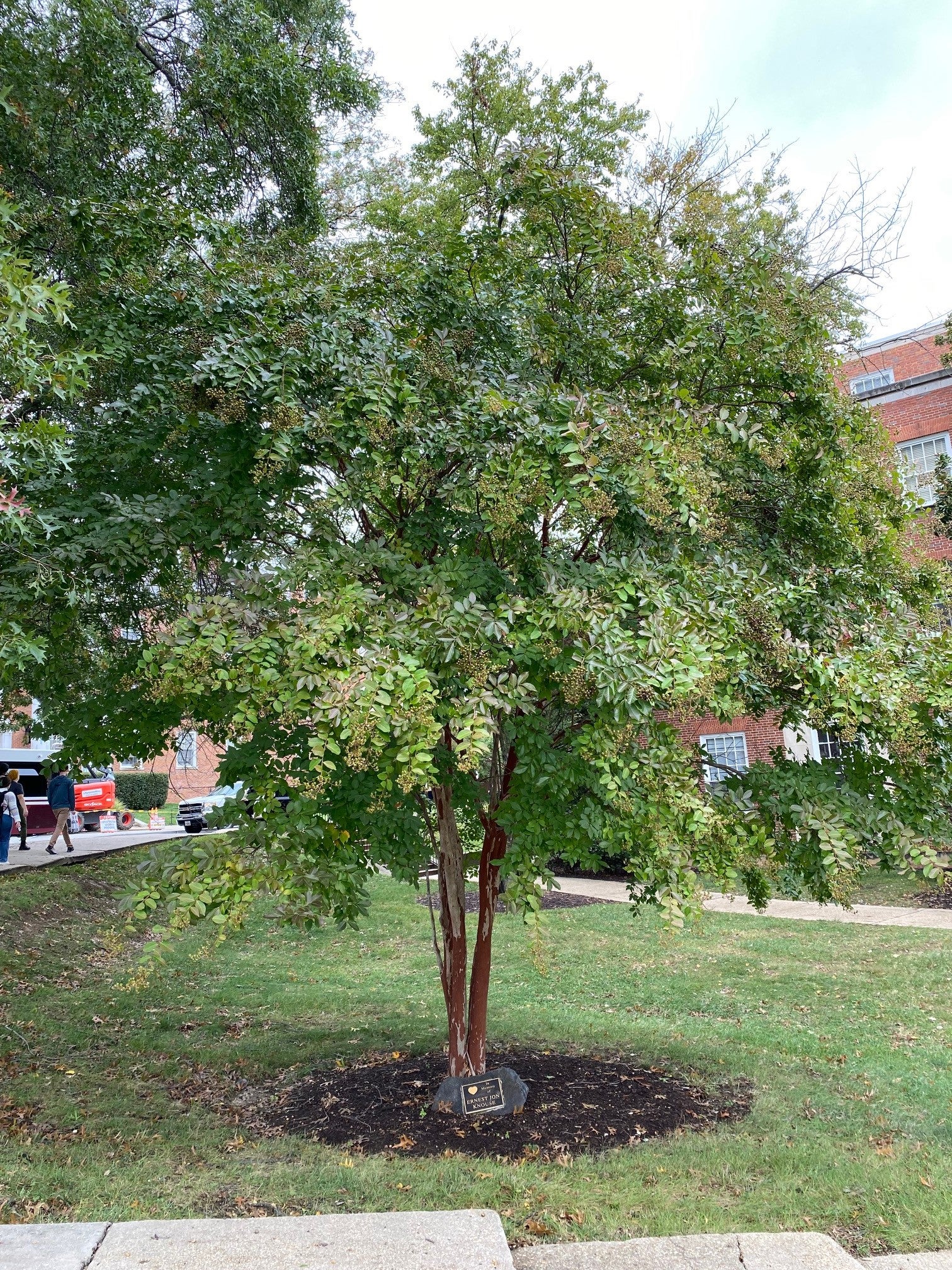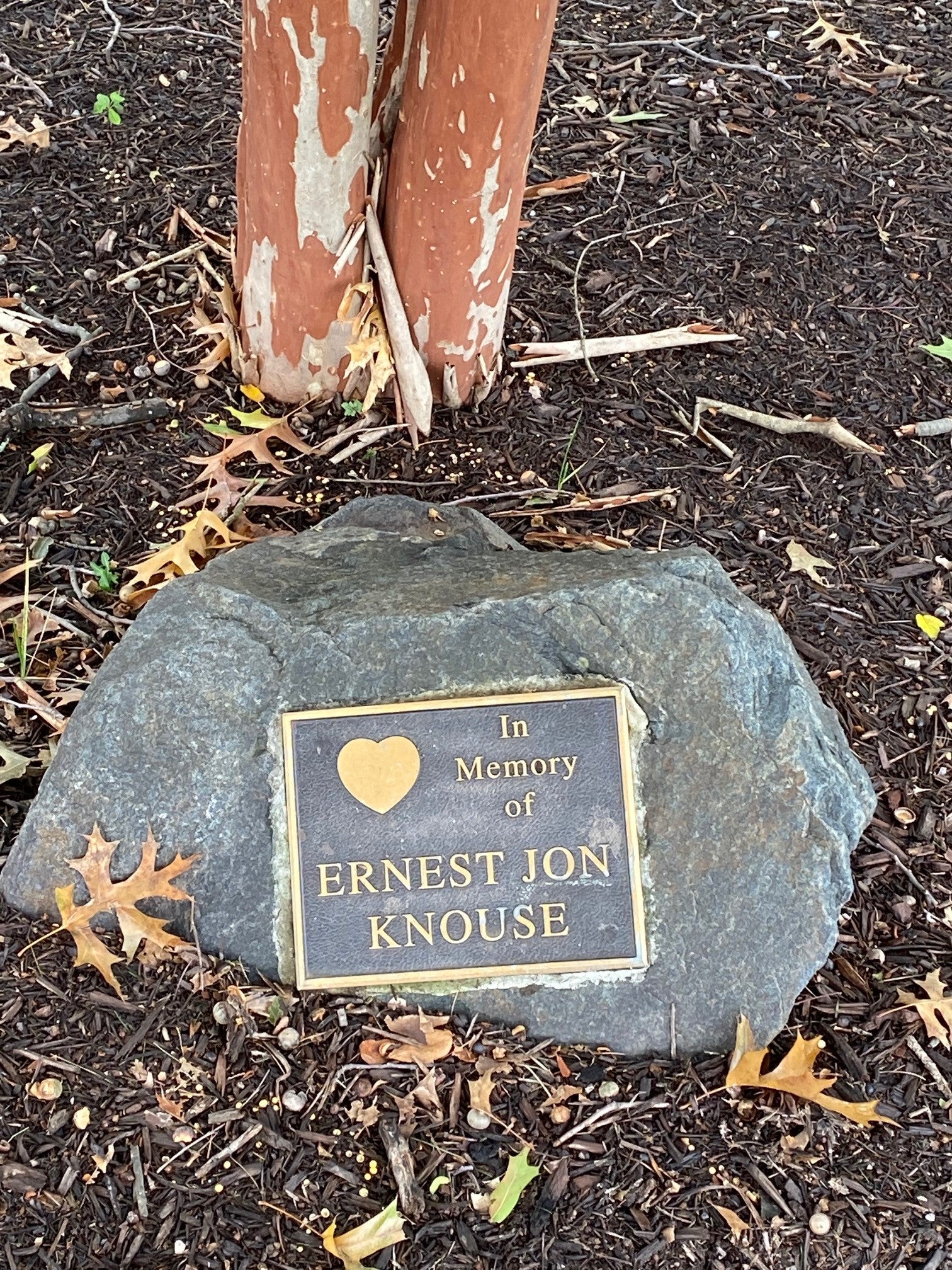Knouse, Ernest Jon
About Ernest Jon Knouse
Both a crepe myrtle and a kousa dogwood are dedicated to Ernest Jon Knouse, a supervisor of the electronics development at the University of Maryland Physics Department, where he worked for 30 years. Mr. Knouse was born in Washington and grew up in Takoma Park, attending Blair High School, Capital Radio Engineering Institute, and later UMD. Mr. Knouse was a Navy veteran, charter member of the UMCL Softball Club, and an avid promoter of recycling in Montgomery County. He lived in Berwyn Heights and passed away on March 10, 1999 from a heart ailment at 60 years old.1 When the department moved from the Toll Physics Building to the Physical Sciences Complex, the kousa dogwood was planted to honor him in the new location.
About the Crepe Myrtle
This tree dedicated to Ernest Jon Knouse is located on the southwest side of the John S. Toll Physics Building, near the “M” traffic circle. It is a crapemyrtle (sp. Lagerstroemia), which is most commonly of the species indica. The crapemyrtle is an upright, wide-spreading multi-stemmed deciduous shrub. Its native range is from the Himalayas to southern China, southeast Asia and Japan, but it now grows in the US from Virginia south to Texas and Florida. The crape myrtle grows to heights and spreads of 6-25 feet. The tree is known for its long bloom period, light pink-gray exfoliating bark, fall color and showy, naturally rose to red flowers with crimped petals that bloom in the summer. The flowers give way to long-persisting round seed capsules. Leaves are elliptical shaped and thick, leathery leaves emerge light green with a tinge or red, are dark green when mature and turn yellow to red in autumn. As for the common name, crepe refers to the crepe paper-like inflorescences (a group or cluster of flowers) and myrtle refers to the bark and foliage features similar to the myrtle.2


About the Kousa Dogwood
The dogwood tree dedicated to Ernest Jon Knouse is located on the North side of the Physical Sciences Complex, across from the Campus Farm. It is a kousa dogwood (Cornus kousa), a small, deciduous flowering tree that can grow up to 30 feet tall. The kousa dogwood has a native range in Japan, Korea, China and Taiwan and features a characteristic brown and tan camouflage pattern on its trunk of exfoliating bark. It flowers from May to June, with four white, pointed petal-like bracts, which are modified leaves that are commonly referred to as the flower portion. However, the true flower is small and yellowish-green and housed in the center of the bracts.4 The kousa dogwood produces pinkish-red fruit - you may be lucky to see some songbirds around the tree in the summer that are attracted to the fruit! The tree grows in a rounded shape with dark green, oval-shaped leaves that turn beautiful shades of purple and scarlet in the fall.3
Written by Joanna Barton & Amanda Sames
- https://www.washingtonpost.com/archive/local/1999/03/15/obituaries/f5bafd2c-601d-4e5e-b6ae-c5ead8821914/?utm_term=.0bcd68adf743
- http://www.missouribotanicalgarden.org/PlantFinder/PlantFinderDetails.aspx?taxonid=282496
- http://www.missouribotanicalgarden.org/PlantFinder/PlantFinderDetails.aspx?kempercode=j910
- https://www.arborday.org/trees/treeguide/TreeDetail.cfm?ItemID=830
